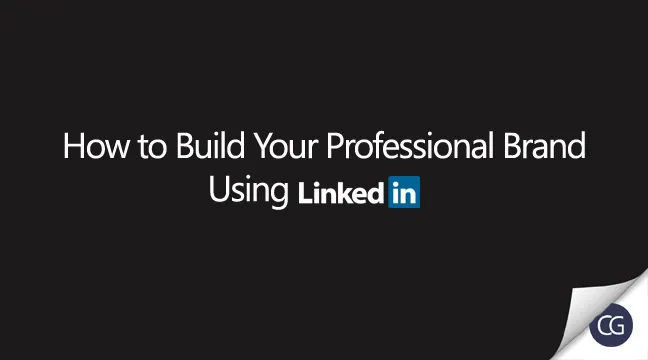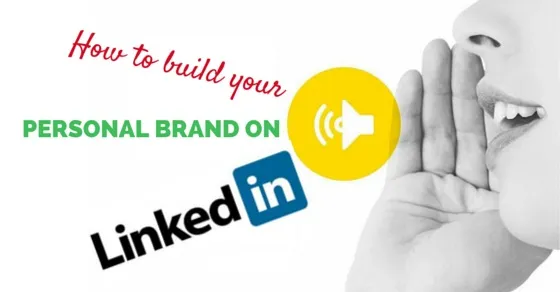LinkedIn has revolutionized the way professionals connect, network, and showcase their skills. Whether you're a seasoned executive or just starting your career, having a presence on LinkedIn is essential. It’s not just a platform for job seekers; it’s a powerful tool for anyone looking to build their professional brand.
Why is LinkedIn so important? Here are a few reasons:
- Networking Opportunities: LinkedIn allows you to connect with industry peers, potential employers, and thought leaders, broadening your professional network.
- Showcasing Your Skills: You can highlight your achievements, skills, and endorsements, making it easier for others to understand your expertise.
- Job Opportunities: Many companies use LinkedIn as their primary recruitment tool, making it a go-to platform for job seekers.
- Industry Insights: By following relevant groups and individuals, you can stay updated on trends and news in your field.
- Personal Branding: Your LinkedIn profile acts like an online resume and portfolio, allowing you to present a cohesive professional image.
In a world where first impressions matter, especially in the professional realm, a well-crafted LinkedIn profile can be your ticket to new opportunities. Embrace the platform, and let it work for you!
Setting Up Your LinkedIn Profile

Creating an impactful LinkedIn profile is the first step in building your professional brand. A well-thought-out profile can attract recruiters, clients, and collaborators. Here are some essential elements to consider:
- Profile Picture: Choose a clear, professional headshot. Your face should be visible, and the background should be simple and non-distracting.
- Banner Image: This is the large image at the top of your profile. Use it to convey your personal brand or showcase your industry.
- Headline: Instead of just listing your job title, use this space to summarize who you are and what you do. Think of it as your personal slogan.
- About Section: Write a compelling summary that highlights your skills, experiences, and professional interests. Make it personal; let your personality shine through!
- Experience: List your work history in reverse chronological order. Focus on achievements and quantify your results where possible.
- Skills and Endorsements: Add relevant skills to your profile. Encourage colleagues to endorse you, as this adds credibility.
- Recommendations: Request recommendations from former colleagues or clients. A strong testimonial can provide social proof of your abilities.
- Custom URL: Customize your LinkedIn URL to make it easier to share and to look more professional.
Lastly, keep your profile updated. An active LinkedIn profile not only reflects your current status but also keeps you on the radar of others in your network. Taking these steps will set you up for success in leveraging LinkedIn for your professional brand.
Also Read This: How to Submit Videos to Shutterstock and Get Noticed
Optimizing Your Profile for Visibility

Optimizing your LinkedIn profile is crucial for making a strong impression and ensuring that your professional brand stands out. When you think about visibility, it’s all about how easily people can find you and recognize your expertise. Here are some essential tips:
- Profile Picture: Choose a clear, professional headshot. Aim for a friendly smile and dress as you would for a job interview in your industry.
- Compelling Headline: Your headline should do more than list your job title. Include keywords that showcase your skills and the value you bring. For example, “Digital Marketing Specialist | Helping Brands Grow Through Innovative Strategies” is much more engaging!
- Custom URL: Personalize your LinkedIn URL. Instead of a random string of numbers, make it something like linkedin.com/in/yourname. It’s more professional and easier to share.
- Summary Section: Think of your summary as your elevator pitch. Use this space to tell your story—describe your skills, experiences, and what sets you apart. Don’t forget to incorporate relevant keywords!
- Experience and Skills: List your work experiences in reverse chronological order. Make sure to include specific skills that relate to your industry. You can even ask colleagues for endorsements to validate your skills.
Remember, your LinkedIn profile is often the first impression potential employers or clients will have of you. By thoughtfully optimizing it, you’ll significantly enhance your visibility and make it easier for others to connect with you.
Also Read This: Step-by-Step Guide to Creating a Side French Braid
Building Your Professional Network

Building a professional network on LinkedIn is not just about the numbers; it’s about creating meaningful connections that can support your career aspirations. Here’s how to effectively expand your network:
- Connect Strategically: Don’t just send requests to anyone and everyone. Focus on connecting with professionals in your industry, alumni from your school, or people you’ve met at conferences. Personalize your connection requests with a brief message explaining why you want to connect.
- Engage with Content: Comment on, like, and share posts from your connections. This interaction not only keeps you visible but also helps you establish rapport with others in your field.
- Join Groups: Participate in LinkedIn groups related to your industry or interests. This is a great way to meet like-minded professionals and share insights, which can lead to new connections.
- Follow Influencers: Keep an eye on industry leaders by following them. Engage with their content and insights, and you might catch their attention, which can lead to new networking opportunities.
- Offer Value: Networking isn’t just about taking; it’s about giving too! Share valuable articles, insights, or offer to help others in your network. This generosity can lead to stronger relationships.
Building your professional network is an ongoing process. It’s about nurturing relationships that could lead to new opportunities, collaborations, or even friendships. So, take the time to invest in your connections, and watch your professional brand flourish!
Also Read This: Comparing Audio Quality Between SoundCloud and YouTube
5. Creating and Sharing Valuable Content
Creating and sharing valuable content on LinkedIn is one of the most effective ways to build your professional brand. It showcases your expertise, provides value to your connections, and encourages engagement. But how do you create content that resonates? Here are some tips:
- Know Your Audience: Understanding who your connections are is crucial. Are they industry peers, potential clients, or recruiters? Tailor your content to their interests and needs.
- Share Industry Insights: Write articles or posts that discuss trends, challenges, or innovations in your field. This positions you as a thought leader and keeps your connections informed.
- Personal Stories: Don’t shy away from sharing your personal experiences. Stories about challenges you’ve overcome or lessons learned can resonate deeply with others.
- Use Visuals: Including images, infographics, or videos can make your content more engaging. Visuals help break up text and can communicate your message more effectively.
- Be Consistent: Regular posting helps keep you on your connections' minds. Create a content calendar to plan and schedule your posts.
Finally, remember to encourage interaction. Ask questions or invite comments to foster a sense of community. Your goal is to create a dialogue, not just a monologue!
Also Read This: How to Create Unique Ads with 123RF Content
6. Engaging with Your Connections
Engagement on LinkedIn is about more than just posting content; it’s about building relationships. The more you engage with your connections, the stronger your professional brand becomes. Here’s how to effectively engage:
- Comment on Posts: Take the time to comment on your connections' posts. Share your thoughts or ask questions to open up a conversation. This shows that you value their input.
- Send Personalized Messages: When connecting with someone new, a personalized message can make a huge difference. Mention common interests or experiences to make your outreach more genuine.
- Join Groups: Participate in LinkedIn groups related to your industry. Contribute to discussions and share your insights. This not only builds your visibility but also connects you with like-minded professionals.
- Share Others’ Content: If you find an article or post that resonates with you, share it with your network and add your perspective. This shows you’re engaged in the community and appreciate others’ work.
- Follow Up: If you’ve had a meaningful conversation or meet someone at an event, don’t forget to follow up. A simple message can keep the relationship alive.
Engagement is all about being authentic and approachable. The more you interact, the more your professional brand will thrive!
Also Read This: How to Sell More Photos on Shutterstock and Attract Buyers
7. Utilizing LinkedIn Groups for Networking
LinkedIn Groups are a fantastic resource for networking and connecting with like-minded professionals in your industry. They serve as virtual meeting places where you can share insights, ask questions, and engage in meaningful discussions. Here’s how to make the most of them:
- Find Relevant Groups: Use the search bar to find groups related to your industry or interests. You can filter by industry, location, and more. Look for groups with active discussions and a healthy number of members.
- Join and Participate: Once you find a group that resonates with you, join it! Don’t just lurk; actively participate by commenting on posts and sharing your own insights. This will help you establish yourself as a knowledgeable member of the community.
- Share Valuable Content: Use the group as a platform to share articles, blogs, or resources that you think would be valuable to members. This not only positions you as an expert but also drives engagement.
- Network with Members: Take advantage of the member list. Reach out to individuals who share your interests or career goals. Send personalized connection requests mentioning the group you both belong to.
- Start Discussions: Don’t be afraid to initiate discussions or ask questions. This can spark conversation and potentially lead to valuable connections.
By engaging effectively in LinkedIn Groups, you’ll not only build your professional brand but also develop meaningful relationships that can lead to new opportunities.
Also Read This: Design Funeral Programs Using Canva Funeral Template
8. Leveraging LinkedIn for Job Opportunities
LinkedIn is more than just a networking site; it’s a powerful tool for job seekers. Here’s how you can leverage it to find your next opportunity:
- Optimize Your Profile: Make sure your profile is complete and polished. Use a professional photo, write a compelling headline, and highlight your skills and experiences. Recruiters often search for candidates based on profile keywords, so choose them wisely!
- Utilize the Job Search Feature: LinkedIn has a dedicated job search section where you can filter opportunities by location, industry, and experience level. Set up job alerts for specific roles to stay updated.
- Follow Companies: Stay informed about organizations you’re interested in by following them. This way, you can see their latest updates, job postings, and potentially engage with their content.
- Network with Recruiters: Connect with recruiters in your field. Send personalized messages expressing your interest in their company or the roles they are hiring for. A direct connection can often lead to insights and opportunities.
- Showcase Your Skills: LinkedIn allows you to add skills to your profile, and connections can endorse these skills. The more endorsements you receive, the more credible you appear to potential employers.
By actively engaging with LinkedIn’s features for job searching, you not only enhance your visibility but also increase your chances of landing that dream job. So, get out there and start leveraging LinkedIn!
Also Read This: How to Remove a Watermark in ShootProof
9. Measuring Your LinkedIn Success
Measuring your success on LinkedIn is crucial to understanding how well your efforts in building a professional brand are paying off. It's not just about the number of connections you have or the posts you share; it's about the impact you create and the relationships you foster.
Here are some key metrics to consider when evaluating your LinkedIn presence:
- Profile Views: Keep an eye on how many people are viewing your profile. A steady increase can indicate that your branding efforts are attracting attention.
- Connection Growth: Track the number of new connections you make over time. Are you connecting with relevant industry professionals?
- Engagement Rates: Look at likes, comments, and shares on your posts. High engagement means your content resonates with your audience.
- Recommendations and Endorsements: The number and quality of recommendations and skills endorsements can serve as a testament to your expertise and credibility.
- Industry Influencer Status: Are you being tagged in posts or mentioned by others? This can be a strong indicator of your influence in your industry.
To make measuring your success even easier, consider using LinkedIn's analytics tools. They offer insights into how your content is performing and who is engaging with it. Regularly check these analytics to adjust your strategy as needed. Remember, the goal is not just to check boxes but to create meaningful interactions and relationships!
10. Conclusion: Sustaining Your Professional Brand on LinkedIn
Building a professional brand on LinkedIn is not a one-time effort; it’s a continuous journey. Just like any relationship, your presence on LinkedIn requires nurturing and attention. Here’s how to ensure that your brand remains strong and relevant:
- Stay Active: Regularly update your profile, share insights, and engage with others’ content. Consistency is key!
- Networking: Don’t shy away from reaching out to new connections. Attend LinkedIn events or webinars to meet like-minded professionals.
- Content Creation: Keep sharing valuable content that reflects your expertise. This not only keeps your profile engaging but positions you as a thought leader.
- Feedback Loop: Ask for feedback from your connections on your content and profile. This can provide insights into how you’re perceived and what you can improve.
- Adapt and Evolve: As your career progresses, so should your LinkedIn strategy. Regularly reassess your goals and adjust your approach accordingly.
In conclusion, sustaining your professional brand on LinkedIn requires dedication, adaptability, and engagement. By consistently measuring your success and evolving your strategy, you can ensure that your LinkedIn presence remains a powerful tool in achieving your career aspirations.